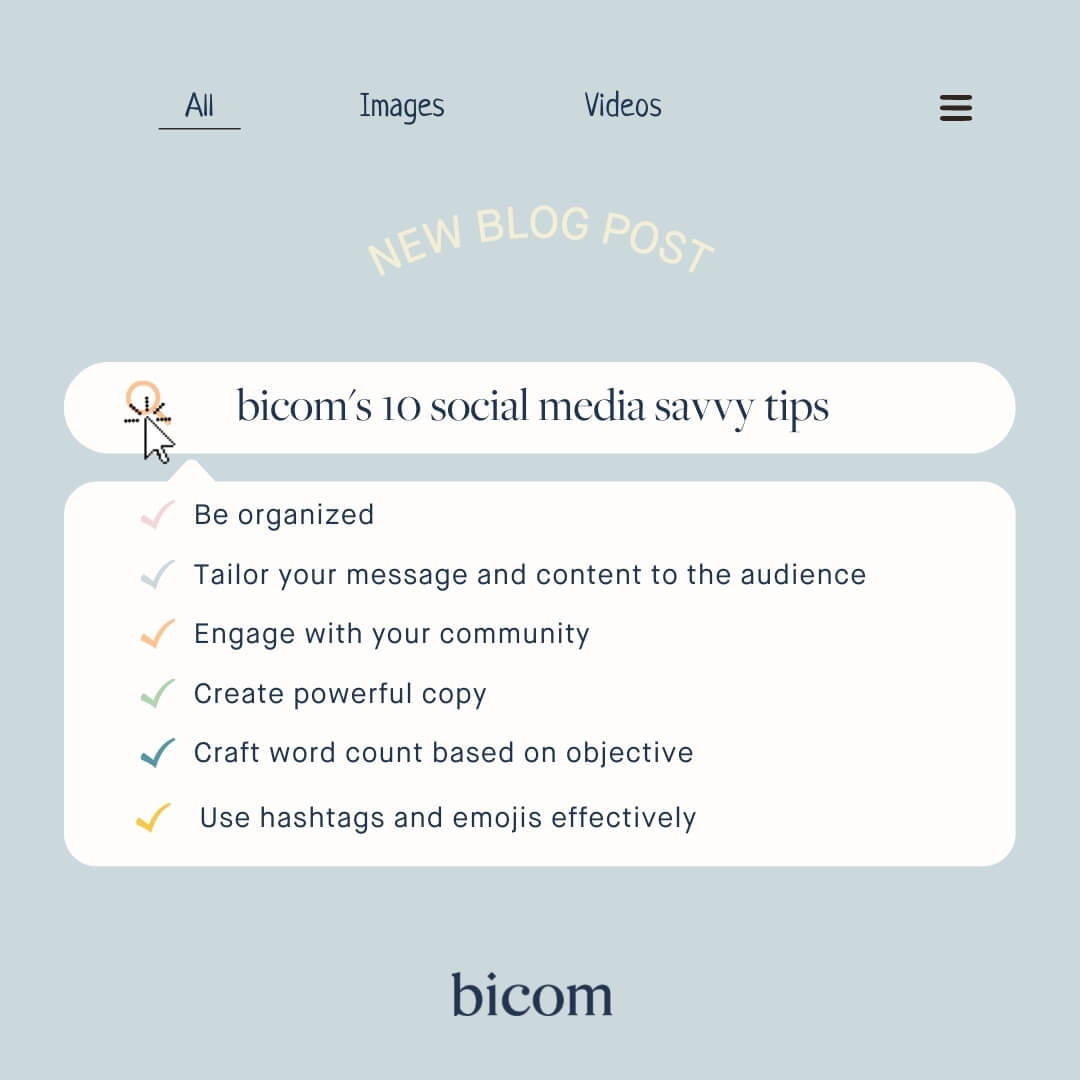Are you a brand selling a product or service? You’re in luck… We’ve got you covered! Here are our 10 tips to create compelling social media content.
1 – Be organized
Create an editorial content calendar to track visuals, captions, and timelines for your social media channels. Organization is key in a fast-paced digital world.
2 – Tailor your content to the audience
If your audience differs from platform to platform, you can cross-post content. However, if your platforms share the same audience, diversify content. It all depends on your brand and what you’re selling!
Typically, Facebook audiences seek out information, tips, and recommendations from other consumers. On Instagram, audiences are looking for more aesthetically pleasing, inspiring, and authentic content.

3 – Engage with your community
Asking questions is a great way to interact with your audience, regardless of the platform. It’s that easy! Social media is built on conversation. If you don’t know what to talk about, ask questions: “What’re you going to do this weekend?” or “What’s your favorite beauty product?” Facebook allows photo-sharing in comments, so ask your audience to share a picture of your product in action; this’ll encourage great UGC (user generated content) to bank for later use. You should also get in the habit of re-sharing content from your community when they mention you. Finally, don’t be shy – use surveys and question boxes to learn more about your community and their interests/needs.
4 – Create powerful copy
There are endless ways to create content and communicate information. When you’re writing captions, always keep your audience’s interests and needs in mind. Stick to the same tone; it’s the basis of your brand identity! Low on inspo? You can lean on visuals to communicate engaging information.

5 – Craft word count based on objective
Facebook is the right platform for longer copy, with a 50-word sweet spot to capture an audience’s attention while communicating key messages. If you want to further communicate your values and mission or broach a relevant topic, you can venture into longer copy to inform and educate your followers.
Always seek to engage your community with your copy; a call-to-action (CTA) is a great way to hook readers. For example, you can suggest your community visit your website to discover a new product or service – it’s as simple as that.
6 – Use hashtags and emojis effectively
Use emojis at the end of your sentences (after punctuation) and in moderation! Hashtag use should vary depending on your brand and the topic. Using the right hashtags can generate engagement; some brands use the same hashtags across all their content, which others like to switch them up. It’s important to make sure hashtags are having an impact on engagement. We recommend using about 11 hashtags and “hiding” them at the bottom of your post or in a pinned comment. Creating a branded hashtag is also a smart tactic!
7- Tell a story
Share your brand values, story, mission, challenges, and goals! Give your platforms a human touch. Share company life, show off your team, personalize the tone and let your community really discover who you are and what matters to you.
8- Create beautiful content
The main objective behind creating visual content is to attract eyeballs.
If you opt for photo content, it should be polished; aesthetically pleasing illustrations are a tried-and-true tactic. Video content is another sure-fire way to capture attention, but you need to communicate your key messaging within the first 15 seconds. Don’t hesitate to use dynamic visuals like GIFs; these tend to attract a large viewership. Graphics are also a useful tool to communicate less glamorous statistics and information.

9 – Tik Tok & Twitter
Tik Tok and Twitter are two high maintenance platforms. If you can’t post consistently, they won’t be an asset to you. You need to commit to creating authentic content on the daily, which equates to time and resources.
10 – Find the right platform
Each platform has its advantages and disadvantages, and each has a specific audience. With Facebook, you’ll attract followers within the 25-30 age demographic. The Instagram platform skews younger. On LinkedIn, you’ll be addressing professionals and like-minded businesses. On TikTok, you’ll be communicating with Gen Z. Ultimately, each platform allows you connect with a different audience and tell a different story.
If you have any questions, hit up bicom‘s digital experts. You can meet our team here we’re on standby to help your brand shine on social!

